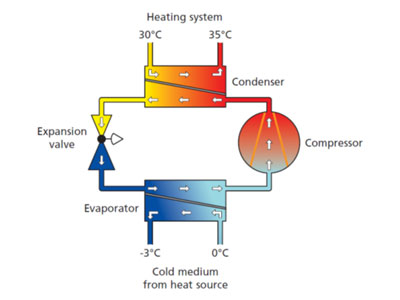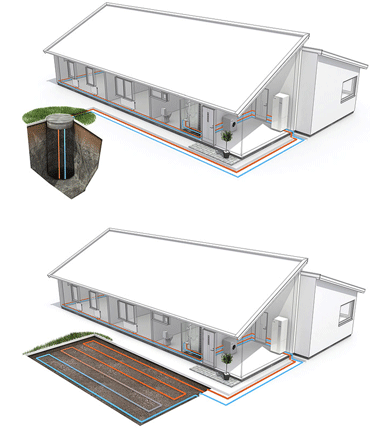

Ground Source Heat Pumps
Heat Pumps can be up to 450% efficient which means for every 1kw of electricity input you will get 4.5 Kw of energy for your heating system and hot water. (Nibe 12kw S 1156 - MCS database SCOP 4.47 @ 45 degree flow temp)
Ground source heat pumps are also known as geothermal systems that extract and transfer the natural heat from the ground into a property, which provides the energy required for both hot water and heating requirements.
The efficiency of a heat pump is measured by the coefficient of performance (COP). This is the ratio of units of heat output for each unit of electricity used to drive the compressor and pump for the ground loop. Typically Cop’s range form 3 - 4 although high efficiency heat pumps can achieve Cop’s of in excess of 4.5 (e.g. 450% efficiency)
A typical 8 - 12 Kw system budgets around £10000 - £15000 dependant on ground conditions, but you must remember to add to this the cost of the radiators or underfloor heating. Average savings that are achieved range between £400 - £800 per annum, depending upon the heating system being replaced.
Function

- A ground loop is made up of several lengths of pipe which are buried in a trench or bore hole these pipe absorb the energy from the ground and transfer this absorbed heat to the heat pump.
- A heat pump converts the energy from the ground to become usable heat within the heating system. This is shown below
What to keep in mind when considering a ground source heat pump.
- The type of heat distribution system. GSHPs can be combined with radiators but under-floor heating is better as it works at a lower temperature.
- Is there space available for a trench or borehole to accommodate a ground loop?
- Is the ground suitable for digging a trench or borehole?
- What fuel is being replaced? If it's electricity, oil, LPG or any other conventional fossil fuel the payback will be more favourable. Heat pumps are a good option where gas is unavailable.
- Want to be 100% renewable? Buy green electricity, or install solar PV or some other form of renewable electricity generating system to power the compressor and pump.
- Need a back-up heating system?
- Is there also a cooling requirement?
- Is the system for a new building development? Combining the installation with other building works can reduce costs.
- Can you incorporate insulation measures? Wall, floor and loft insulation will lower your heat demand.



